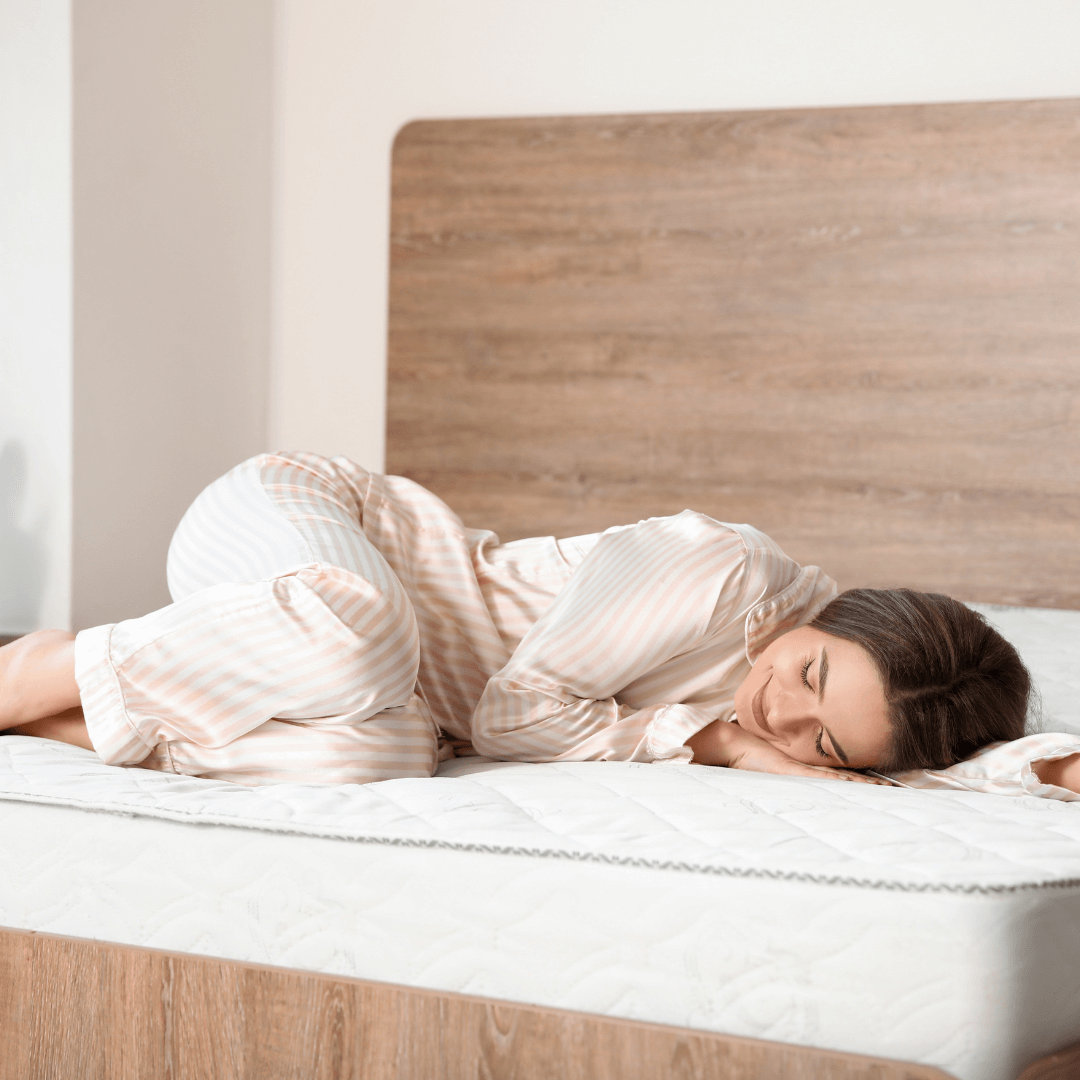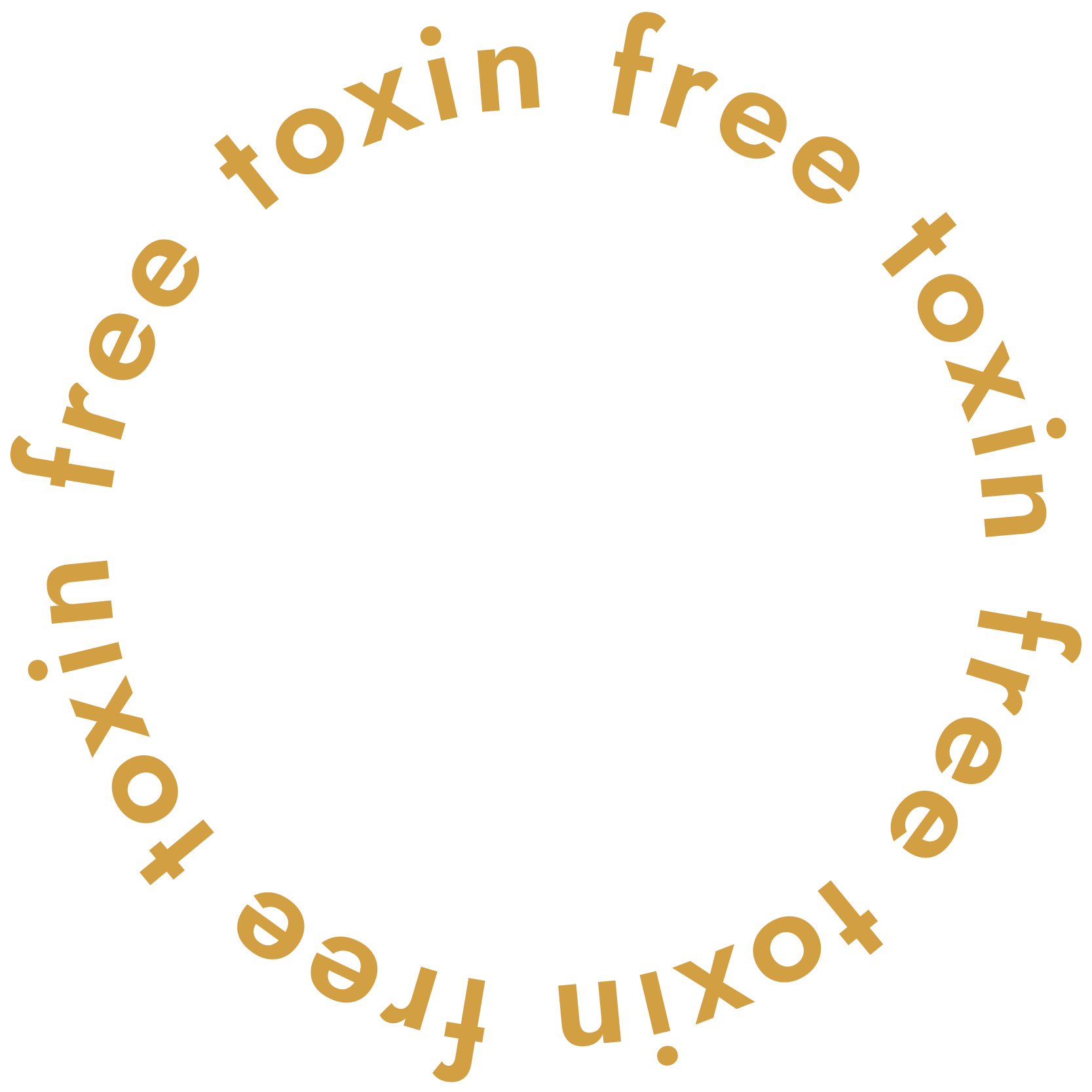Apple Podcasts | Spotify
If you are anything like me, there was a point in time when you thought you could purchase a mattress or some other kind of furniture (rug, desk, bookcase, etc.) and you could air out that smell that comes with it. When you unwrap the plastic wrapping, you can just smell the chemicals just oozing out of it. You put it in the garage or on your porch to “air it out” and once it doesn’t smell anymore, you believe that those chemicals have disappeared into the air and your VOC exposure is eliminated.
I get why people believe that, but today, I’m busting that myth. And don’t worry if you believe this, I used to believe it, too! But what you’re smelling are VOCs, A.K.A – Volatile Organic Compounds. We’ll be diving into studies that have been done on off-gassing. Turns out, these chemicals stay in your mattress. It doesn’t matter how much time you give them to “off-gas.”
So what’s the solution? How can we make sure that we’re not up close and personal with harmful chemicals every night? Personally, I buy VOC-free mattresses. Currently, there are only two certifications that can guarantee your mattress doesn’t contain VOCs.
I’m going into the specifics of each certification and some of my favorite mattress brands to look out for. So, next time you’re in the market for a new mattress, make sure to tune into this episode!
In this episode:
-
What is the chemical smell on new furniture?
-
The myth of off-gassing
- What are VOCs and why should they be avoided?
-
Polyurethane on mattresses
-
Organic VOC-free mattress recommendations
What is That Chemical Smell on Furniture?
Our sense of smell is very heightened. It’s intended to protect us. When it comes to buying something like a mattress, that strong smell when you take the packaging off is off-putting. You think it’s caked in chemicals so the first thing you do is let it air out. You believe whatever chemicals are in that mattress are going to flow away into the ether and not come back. They’re just going to be gone and once we can’t smell that danger anymore, we’re good.
What you’re smelling are volatile organic compounds (VOCs). Anything you can smell that dissipates quickly is a VOC, and that’s where the smell comes from.
Not all VOC exposure is bad. These are some common examples:
-
Flowers
-
Bananas ripening
-
Diffusing essential oils
Those are volatile organic compounds. They’re very light in the air and they’re very volatile. But when we’re talking about mattresses, the VOCs we’re talking about come from a very common source which a lot of mattresses are made out of: Polyurethane.
Polyurethane on Mattresses
Polyurethane can contain a host of VOCs, but they’re the toxic kind. Things like benzene, toluene, ethylbenzene, aldehyde, and butylated hydroxytoluene can hide these things. Bad exposure to these VOCs can cause a lot of issues because they’re known carcinogens.
The idea that they disappear after you can’t smell them anymore is very false. The longer you sleep on a mattress, the more VOCs it releases.
Polyurethane makes up the memory foam in mattresses. As that memory foam starts to break down, it actually releases more and more of these VOCs. Body heat makes it release even more.
In a study from 2019, researchers looked at VOC emissions from multiple different kinds of polyurethane mattresses to try to figure out under what conditions they release the most VOCs. They took eight different types of polyurethane mattresses and they tested them under different conditions. When you or your child are lying on their mattress, it raises the temperature, relative humidity, and breathing out of the mouth. Since you’re so close to the mattress, it creates more CO2 concentration and the amount of VOCs significantly increased under those conditions.
A mattress isn’t the most toxic the moment you buy it. Airing it out isn’t getting rid of the fact that polyurethane is actually made from those chemicals. They don’t go anywhere. They don’t disappear. They’re still in your mattress and the conditions that release them the most are when you’re sleeping in your bed.
Tips for Reducing VOC Exposure
Buying a new, organic mattress is the only way to truly guarantee you won’t be exposed to toxic VOCs. I totally understand that’s not always possible for everyone. Here are a few other ways you can reduce your VOC exposure:
-
Wash bedding regularly: Wash bedding regularly to remove dust and potential VOCs that may have settled on the fabric.
-
Use a mattress cover: Covering the mattress with a breathable, waterproof mattress protector can help reduce direct exposure to VOC-emitting materials while still allowing air to circulate.
-
Use an Air Purifier: Consider using an air purifier with a HEPA filter to help remove VOCs and other pollutants from the air in your home. Place the purifier in the bedroom or wherever the mattress is located for optimal effectiveness.
Organic Mattresses
One of the best investments I’ve ever made was to get an organic mattress with no VOCs. In a world with so much greenwashing, how do you know which mattresses don’t have harmful chemicals in them?
There are only a few certifications that guarantee the mattress you’re buying does not contain these harmful VOCs.
-
Global Organic Textile Standard (GOTS)
-
Global organic latex standard
-
OEKO-TEX Standard (however, it doesn’t ensure the mattress fiber is produced organically and there are some chemicals still allowed, but it does also ban flame retardants, colorants, and allergenic dyes.)
What if I Can’t Afford a New Mattress?
If you can’t find the first two or it’s out of your financial reach to get a mattress that is GOTS certified, then OEKO-TEX would be the next step down and still be significantly healthier for you than conventional polyurethane-made mattresses.
At a minimum, get a GOTS-certified pillow so the thing you’re sleeping on and breathing onto isn’t releasing all of those VOCs.
Recommended brands:
I hope you learned something from this episode. Next time you’re shopping for furniture, try your best within your budget to shop for things that don’t have the chemicals to begin with!
If you enjoyed this week’s episode, please:
-
Leave a positive review or rating wherever you listen.
-
Shop toxin-free products on my Toxin Free Shopping Guide.
-
Download your free Tossing the Toxins Guide.
-
Post a screenshot, what you loved from the episode, and tag me on Instagram @wendy_toxinfreeish
-
Want to ask me a question to get answered on the podcast? Leave me a voice message here.
Related Episodes:
Episode 18: 6 Ways to Get a Better Night’s Sleep, Naturally
Episode 25: Stop Obsessing: Navigating a Toxin Free Lifestyle with Balance



+ show Comments
- Hide Comments